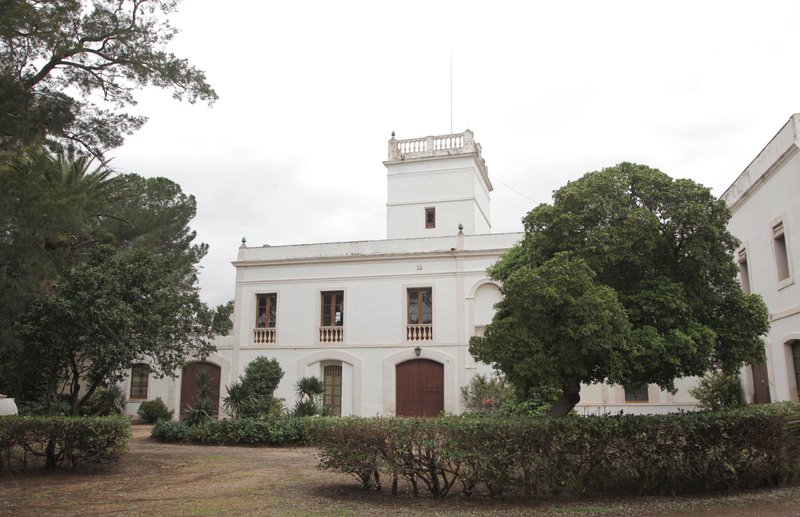The centre of Miró’s artistic universe
After a series of funding setbacks, April 20 finally sees the official inauguration of the Mas Miró project to turn the country residence of the great artist Joan Miró in Mont-roig del Camp in Tarragona into a museum
One of the main renovated areas that will be open to the public is Miró’s studio, which he built in 1935“This house is like a journey into the past. The duo Miró-Mont-roig is a winning combination”
All my work is conceived at Mont-roig,” said the great Catalan artist, Joan Miró, of his beloved country residence in the Tarragona village. In fact, the house in Mont-roig is the place where, in 1911, while recovering from illness, Miró decided to devote himself to painting. In fact, the country house became the model for one of Miró’s most famous paintings, “La Masia” (The Farm), which today hangs in the National Gallery of Art in Washington DC.
Now, after a string of setbacks, the Mas Miró project to turn the Miró residence into a museum will finally be completed. On April 20, coinciding with the 125th anniversary of the painter’s birth, the new Miró museum in Mont-roig del Camp, in Baix Camp, will be officially inaugurated. Various areas of the house have been renovated and will be open to the public, including the artist’s studio.
However, getting this far has been a rocky road for Mas Miró. The project hit a roadblock at the start of 2017 when the Joan Miró Foundation failed to get a subsidy it was expecting from the Spanish government. Yet, a few months ago the cabinet in Madrid authorised a payment of 200,000 euros, and the foundation was able to finish the project.
Miró’s studio
One of the main renovated areas that will be open to the public is the artist’s studio, which he built in 1935, and which boasts two murals he himself painted on the walls, as well as different personal objects, and restored furniture and decoration from the time. A section of the summer house and the old storeroom will also be open to the public, along with a new reception, gift shop and projection room.
The artists spent his summer in the Mont-roig house for almost 65 years. The buildings of the complex are surrounded by 10 hectares of land which has been planted with the same crops that grew there in Miró’s time, including an almond orchard and a vegetable garden.
The budget for this first phase of the work on the museum amounted to 400,000 euros, the 200,000 euros from the Spanish authorities mentioned above and 130,000 from the Catalan government, with the Tarragona provincial council also contributing 30,000 euros. As the funding has been slow in arriving, the foundation was forced to split the renovation of the country house into stages, and to augment the financing with private sponsors. According to Mont-roig mayor and head of the foundation, Fran Morancho, “Mas Miró is not a Mont-roig project, it is a Catalan and world project.”
The inauguration of the museum on April 20 will include the presence of King Felipe VI.
Journey into the past
Miró’s descendants and representatives of the foundation are over the moon about the progress made on the house. “This house is like a journey into the past and we are lucky that it is located in Mont-roig. The duo Miró-Mont-roig is a winning combination”, said the artist’s grandson, Joan Punyet. Meanwhile, Jaume Freixa, head of the Joan Miró Foundation in Barcelona, labelled the reconversion project as “ideal” because it will allow visitors to get to now the environment where the artist created his works.
The Mas Miró Foundation, which was set up in March 2013, is overseeing the reconversion project and the opening of the house to the public. It is supported by the Joan Miró Foundation, Successió Miró S.L – a company formed in 1996 by the heirs of Joan Miró to administer the rights of the artist’s works – and the Town Hall of Mont-roig.
Joan Miró was born in Barcelona on April 20, 1893 and died in Palma de Mallorca on December 25, 1983. As the three most important places in his life, Barcelona, Mallorca and Mont-roig are often defined as the Mironian magic triangle.
art
A life in the service of art
Joan Miró’s first solo show was in Barcelona in 1918. In 1920, he made his first trip to Paris, where he met Pablo Picasso. Miró then divided his time between Paris and Mont-roig. After experimenting with surrealism and lithography, Miró left Spain in 1936 because of the war and the following year was commissioned to create a monumental work for the Paris World’s Fair. Miró’s first major museum retrospective was in New York, in 1941. In 1944 Miró began working in ceramics and prints; from 1954 to 1958 he worked almost exclusively in these two mediums. In 1958 Miró was given a Guggenheim International Award for murals for the UNESCO building in Paris. During the 1960s he began to work intensively in sculpture. In the years that followed there were a number of Miró retrospectives in Paris. Miró’s foundation in Barcelona opened in 1975.








